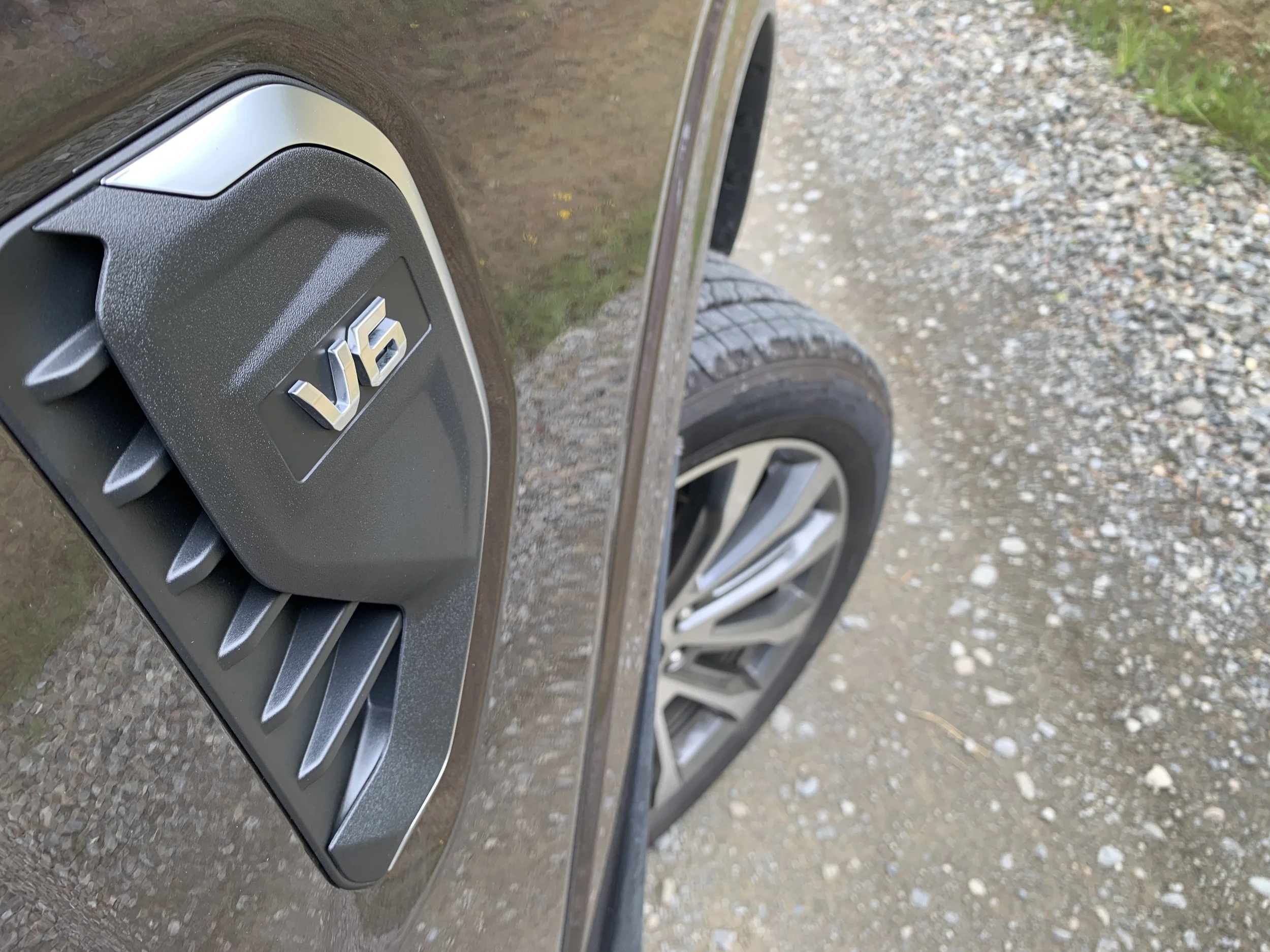Clearing the air on exhaust ratings
/Government’s brand-new emissions testing protocol will be fuelled by the old methodology. How’s that going to work?
ASSESSMENT of emissions in the Clean Car era will still rely heavily on a measuring standard used for decades and considered increasingly outdated.
This was spelled out by the Motor Industry Association, which acts for new car distributors, when speaking about how Government’s intent to use a latest exhaust count evaluation tool.
The industry says continued use of outcomes delivered by a 1990s’-era calculator is likely to fuel that change, as most cars delivered to this market are engineered for it. Though identifying this as a less than an ideal situation, there’s confidence it will be an adequate make-do, albeit with a degree of ‘wait and see’.
An accurate gauge of emissions is a crucial determinant of the ‘ute tax’ impacting on April 1. Legislation enacting a day after Government releases another landmark document, the Emissions Reductions Plan, will dictate which vehicles sold new will be hit by up to $6000 in penalties and which won’t.
Government holds that the best device for sorting good from the bad is WLTP (Worldwide Harmonised Test Procedure), mandated by the European Union and in use there since 2018.
It’s the next step yardstick from the NZ-familiar NEDC (New European Driving Cycle) evaluation, employed internationally from 1992 and still preferred by car makers for some countries, including ours.
Government expects new cars to have WLTP ratings for the Standard’s introduction. That’s created a resolution perhaps special to this part of the world.
Emissions and economy testing is left to manufacturers with results shared to their distributors, but the test itself depends on the market vehicles go to.
WLTP was devised for Europe, and though intended as an international standard has yet to achieve that status. It developed in recognition that NEDC was out of step with new technology and had potential to deliver erroneous outcomes.
Whereas NEDC is essentially a laboratory-based theoretical test, WLTP gets out on the road to be more representative of real-world driving. A specific protocol, not covered by NEDC, is the real driving emissions test that traces tailpipe emissions while a car is driven in a wide range of both everyday and extreme conditions. For a fuller understanding, check out this link https://www.wltpfacts.eu/from-nedc-to-wltp-change/
As superior as WLTP has proven to be, the industry here argues NEDC cannot simply be parked up. WLTP ties strongly to Euro 6, a higher emissions regulation than is expected here. There’s also the issue of Australia.
Car makers bundle our countries as a single market, to the point where the MIA estimates a 96 percent commonality in model choice.
Being the much larger customer – annually accounting for five times as many vehicles as New Zealand, including in 2021, our market’s strongest year on record – gives Australia priority. It calls all the shots. Unfortunately for the NZ Government, Australia is less Green-minded. It favours NEDC (and Euro 5) has no intent to change any time soon.
As result, NZ has steered to a process of WLTP-equivalence. Government agencies have a conversion formula intended to covert manufacturer-provided NEDC data into WLTP-relevant outcomes. This was first used last year with Clean Car’s announcement, primarily to show why all diesel utes were dirty enough to warrant penalties.
The process hinges on assumption that NEDC outcomes are truly representative to start with.
Overseas’ evaluation casts doubt. The European Union’s adoption of WLTP was driven by suggestion NEDC, in respect to judging fuel economy, can be up to 23.5 percent awry. Variability also occurs with WLTP, but is more like 4.9 percent.
There have been instances where emissions and economy performances ascertained under NEDC have worsened when the same vehicles are tested to WLTP.
The MIA’s chief executive, David Crawford, accepts EU contentions about NEDC yet also believes it withstands broader criticism. Because of NZ’s tie-up with Australia, he maintains NEDC cannot be ignored regardless of what happens going forward.
“Over 96 percent of all New Zealand-new vehicles are still tested to the NEDC protocol.”
Is the industry satisfied integration of NEDC values will deliver a relevant degree of accuracy?
“It’s not 100 percent accurate, but it’s the best that we have. It at least means the same rules apply to all makes and brands.”
There are recognised quirks in the system. WLTP at full strength is called ‘4p’, because it measures results across four distinct speed settings: Low, medium, high and extra-high. The latter is not considered useful for NZ, as it measures at 130kmh so our equation covers the first three cycles, hence it’s called ‘3p’.
It’s a little jury-rigged so how makes deliver that information and distinguish those parameters becomes vital.
“We don’t have that extra high-speed component so what Government are allowing us to do is to allow us to convert data from WLTP 4p to 3p ad NEDC to 3p.
“We know that if we are converting from the full 4p to 3p-equivalent and we’ve only got the combined value for the 4p, without the component parts, then that is a less accurate conversion that if we have the component parts for low, medium, high and extra-high.
“Our advice to members is that, when they get a vehicle’s homologation papers they should get the full data sheet for both the fuel consumption and the equivalent CO2 data for each of the measured points because that allows the conversion calculation to be more accurate.”
The MIA has been checking that the Government formula works and makes sense and has also updated a table tracking CO2 emissions from 2006, which has always been based on NEDC values. This was shared to MotoringNZ.com and comparison of NEDC counts and WLTP conversions makes for interesting reading in respect to average CO2 counts, and year-on-year percentage improvements.
The latter remain close, but under NEDC outcomes are more positive.
The fleet-wide CO2 emissions averages for 2021, 2020 and 2019 with NEDC cite as 166, 174.2 and 175.8 grams per kilometre respectively, which represent as reductions of 4.7, 0.9 and 1.8 percent respectively.
Under WLTP for the same period, the counts are 187, 196.3 and 198.5 g/km. The reduction in 2021 against 2020 would be 4.7 percent, from 2019 to 2020 would have been 1.1 percent and from 2018 to 2019 would have been 2.6 percent.
Conceivably, then, emissions counts for the 2022 year might appear to have gone backward, despite that actually being the case, simply as result of a change of calculation.
“The 3p WLTP values are higher … but the targets are now going to be expressed in that format so we need to measure things in that format to see how close or far away we are to the targets (set by Government).”
He’s confident the industry is well-prepared for transition. “We’ve amended our back office systems to be able to incorporate all the relevant data and have it all converted into three cycle WLTP for comparative purposes … and in time we will find out how accurate, or not, it is.”
Reminder of the sensitivities at play raised with the market leader, Toyota New Zealand, last week announcing its fleet emissions went from 162 grams per kilometre in 2020 to 158 g/km in 2021, a three percent drop.
It also claims to have achieved a 14 percent emissions reduction from its fleet in the past five years.
Independent analysis indicates the national new car sector as a whole experienced a 4.5 percent CO2 drop in 2021.
These findings were all established using NEDC. When asked about its confidence in the quality of those measurements, TNZ referred media inquiry to the MIA.
Crawford expressed absolute confidence that the percentage improvements cited by TNZ would have come out the same when measured by the WLTP process.
The Clean Car Standard is the first delivery of a serious emissions legislation here and its introduction is but the first phase of a full-out strategy that is designed to implement until late in this decade.
The bigger picture plan requires stepped reductions in average carbon emissions from NZ-new (and imported used) vehicles between 2023 and 2027. Importers that fail to achieve targets face significant financial penalties.
Distributors made numerous submissions about the Standard, most pointing out shortcomings, in hope of persuading Government to water down its proposed targets. They learned this week that none of those pitches have been successful. The next chance is a review in 2024.
WLTP might not have been in Government’s thoughts had its EU rollout gone as originally scheduled, with implementation in 2023. The Volkswagen Dieselgate emissions cheating scandal of 2015 accelerated adoption. It has applied to all new cars sold in Europe from September 1, 2017, and all new car registrations there from the same date the following year.
TNZ cites its own CO2 improvement as coming from an increase in spread and sales of models with petrol-electric drivetrains that, though not as Green as more intensely electric drivetrains, are nonetheless well-proven as emissions inhibitors.
It sold 11,400 hybrids in 2021, its 34th year of market leadership, up from 8135 in 2020 and now offers the technology across all mainstream passenger models.
It expects further improvement as hybrid supply frees up and because it will also start selling its first full electric car, the BZ4X, this year.
Even so, TNZ’s strongest seller in 2021, with 8427 registered, was the Hilux one-tonner, which as yet only avails with a diesel engine that in present tune will be hit by the ute tax, though not to maximum impact. It has plenty of company as no diesel ute sold here escapes penalty.
Toyota Japan has talked about producing a hybrid Hilux and recently showed off a lookalike utility that it suggested will be produced as a fully electric model.
TNZ general manager of new vehicles and product planning, Steve Prangnell, says the make plans to offer an electrified version in every model globally by 2025.
He attests that Hilux in latest form has delivered a six percent improvement in CO2 over its predecessor.
“We will continue to provide a variety of vehicles and powertrains to suit all our customer needs as we look to lower our emissions.”
The RAV4 hybrid electric was TNZ’s second highest seller with 4598 units registered out of a total of 6,215 RAV4s. The world’s biggest selling vehicle, the Corolla, also continued to sell well in 2021 with 1988 hybrid electric and 2780 petrol-pure examples registered.


















